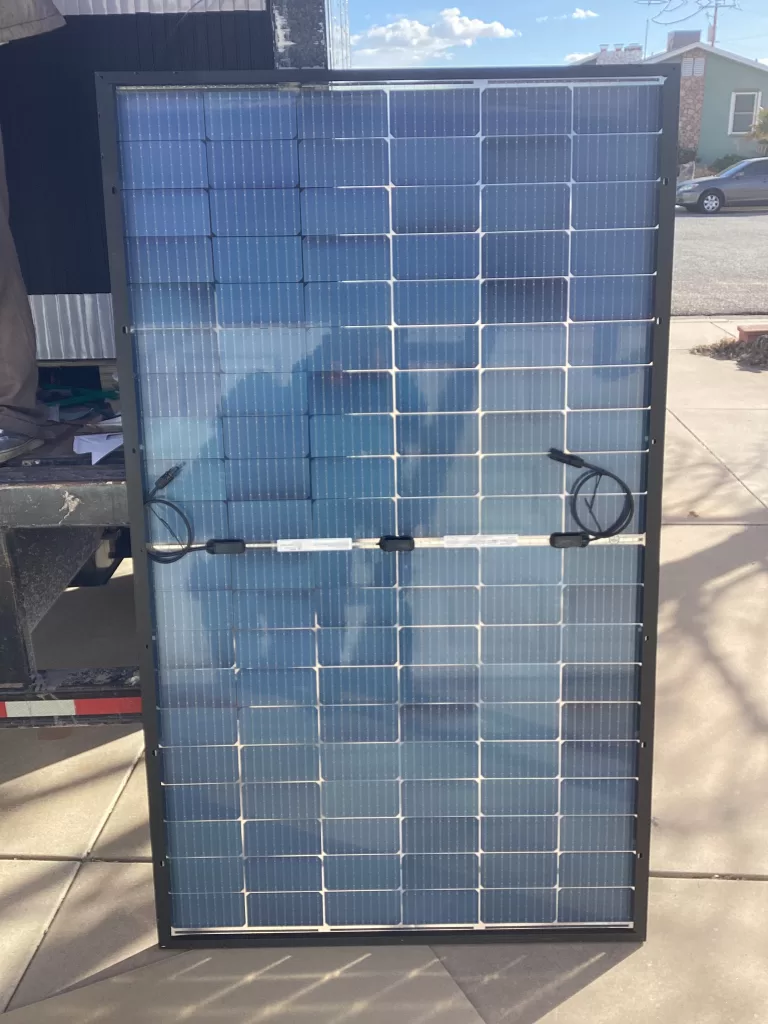Bonus production on solar panels in St. George, UT using bifacial panels.

What is a bifacial solar panel?
A bifacial solar panel is a type of solar panel that has the ability to produce electricity from both sides of the panel, as opposed to a traditional solar panel which only generates electricity from one side.
Bifacial solar panels are designed with a transparent backsheet and a glass frontsheet, which allows sunlight to pass through and hit the solar cells on both sides of the panel. This enables the panel to capture more sunlight, and therefore generate more electricity, than a traditional solar panel.
In addition to their higher energy output, bifacial solar panels also have other advantages, such as greater flexibility in installation (since they can be mounted vertically, horizontally or at an angle) and increased durability (since they are less prone to damage from weather conditions like hail or wind).
Why are bifacial panels popular at the moment?
Bifacial solar panels have become increasingly popular in recent years due to several reasons. Here are some of the reasons:
Increased efficiency: Bifacial solar panels can capture light from both sides of the panel, which allows them to generate more electricity than traditional solar panels. Studies have shown that bifacial solar panels can achieve a 10-30% increase in energy output, depending on the specific conditions of the installation site.
Cost-effectiveness: Although bifacial solar panels can be more expensive than traditional solar panels, their increased efficiency means that they can produce more electricity per unit area, making them more cost-effective in the long run.
Find out how much solar panels cost for your home.
Flexibility in installation: Bifacial solar panels can be installed in a variety of ways, including vertically, horizontally, or at an angle, which makes them suitable for a wider range of installation sites.
Durability: Bifacial solar panels are often more durable than traditional solar panels, as they are less prone to damage from weather conditions like hail or wind.
Environmental benefits: Like traditional solar panels, bifacial solar panels produce clean, renewable energy without emitting greenhouse gases or other pollutants, which helps to combat climate change and improve air quality.
Overall, the increased efficiency and other benefits of bifacial solar panels have made them a popular choice for a wide range of solar energy projects, from large-scale utility installations to residential rooftop systems.
What do bifacial solar panels look like?
Bifacial solar panels look similar to traditional solar panels, but with a few key differences. The most noticeable difference is that bifacial solar panels have a clear backsheet, which allows sunlight to pass through and reach the solar cells on the back of the panel.
The front of a bifacial solar panel typically consists of a glass or plastic layer, which protects the solar cells and helps to direct sunlight onto them. The solar cells themselves are often made of silicon, although other materials may also be used.
The back of a bifacial solar panel looks similar to the front, with solar cells embedded in a layer of material that allows light to pass through. However, unlike traditional solar panels, which have a solid backing, the back of a bifacial panel is usually made of a clear or translucent material that allows light to pass through to the backside solar cells.
Overall, bifacial solar panels look similar to traditional solar panels, but with the added feature of a clear backsheet and solar cells on both sides, which allows them to capture more sunlight and generate more electricity than traditional panels.